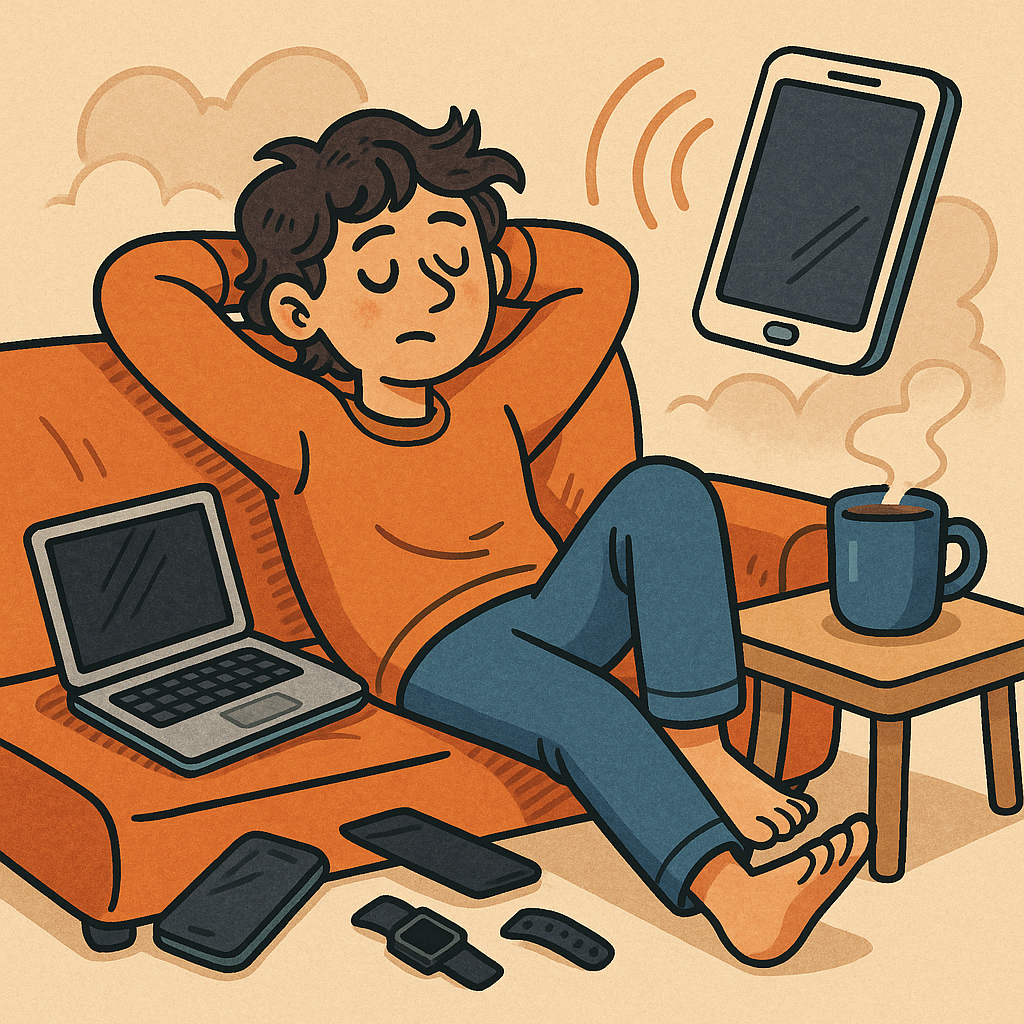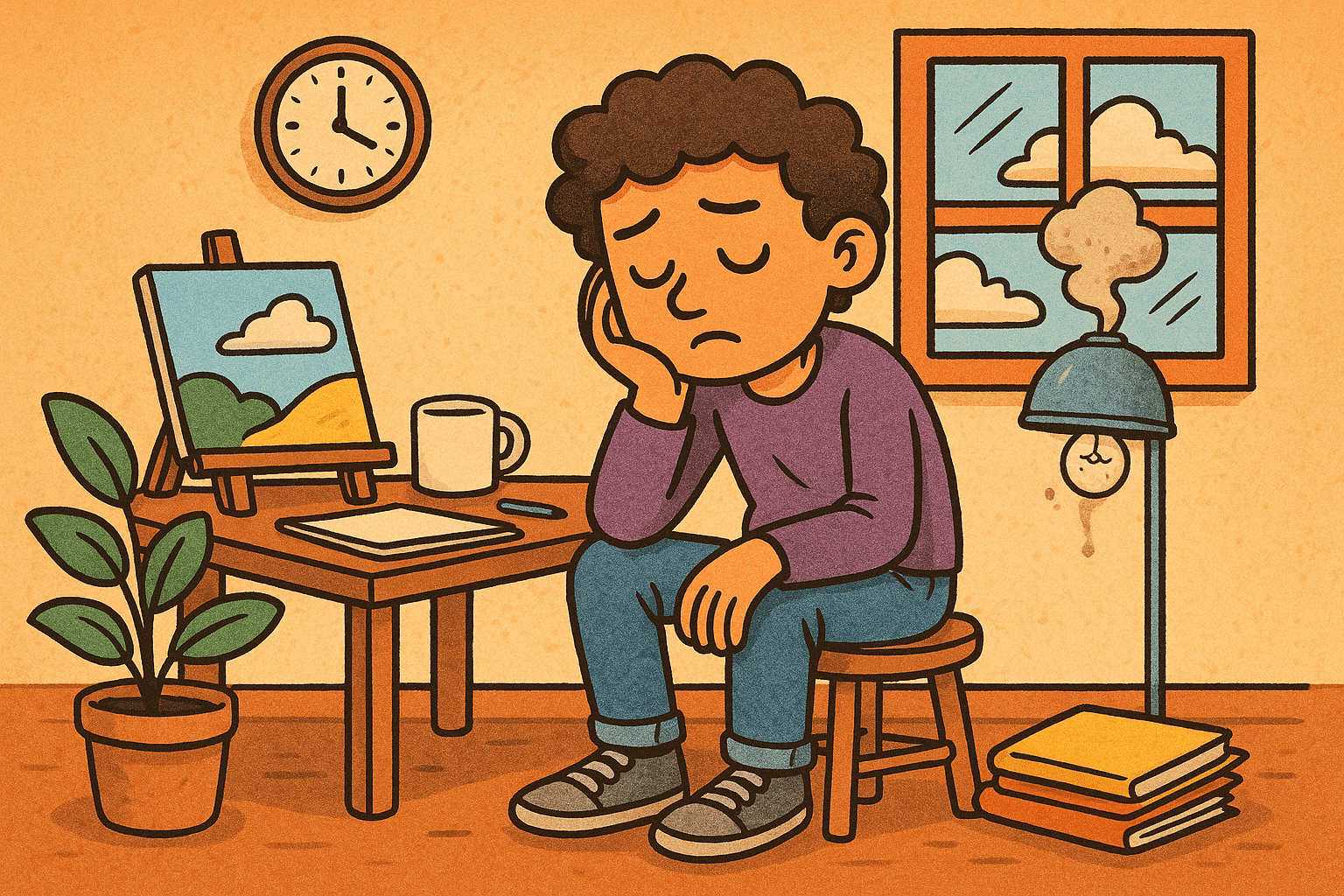Imagine a digital life that doesn’t drain you—one where your tech empowers rather than exhausts. This guide dives into why digital minimalism and mindful tech habits are becoming essential in 2025, and how you can build a sustainable digital routine that feels energizing, not depleting.

Why You’re Exhausted (And It’s Not Just You)
We live in a digital world pumped full of endless notifications, social feeds, Zoom calls—and yes, fatigue. Just last month, nearly half of Gen Z report limiting screen time daily, and searches for “digital detox ideas” are up 72%—a clear sign people want relief.
Research from Psychology Today makes it plain: “Excessive phone use is linked to poor sleep, mental fatigue, and increased risk of burnout”—the kind of burnout that isn’t obvious until symptoms emerge.
Smartphone dependence even leads to depression among teens via academic burnout and lost sense of belonging.
What This Means for You
Your current habits might include:
- Constant checking of phone during off-hours
- Endless scrolling through mindless content
- Frequent videoconferences with no breaks
These habits don’t just waste time—they chip away at focus, disrupt boundaries, and degrade mental health.
Introducing the Trend: Digital Minimalism + Mindful Tech Use
Digital minimalism—coined by Cal Newport—is a growing lifestyle where you intentionally choose tech habits that add value, and prune what doesn’t. This means using fewer apps, setting clear boundaries, and eliminating noise.
In 2025:
- Gen Z is leading the charge, with 46% actively limiting screen time.
- Wearable tech + AI tools are emerging to detect early warning signs of fatigue—smart alert systems that help you slow down before burnout hits.
How to Build a Digital Life That Doesn’t Drain You
Here’s your step-by-step guide. These strategies are all actionable, easy to adopt, and backed by research:
1. Audit Your Digital Life
- Track screen time: Use built-in tools (e.g., iOS Screen Time, Android Digital Wellbeing).
- Identify drainers: Apps that hook you but add no value.
- Rank importance: Only keep tech that supports your goals and happiness.
2. Set Clear Boundaries
- Work cut-off times: Avoid checking work email/messages after hours. Studies show smartphone use in off‑hours fuels work-life conflict and burnout.
- Use “Do Not Disturb”: Schedule tech-free windows in evenings or weekends.
- Experiment with sabbaticals: Try weekend or day-long digital detoxes to reset .
3. Declutter Mindlessly
- Uninstall social media apps you don’t actively use.
- Switch off non-essential notifications.
- Use grayscale mode or app blockers to make attention-sucking apps less appealing.
4. Replace Draining Tech with Life-Enriching Alternatives
- Yoga, mindfulness, walks: Reduce screen fatigue and recharge your mind.
- In-person connection: Nurture real-world friendships to offset digital overwhelm.
- Creative hobbies: Reading, a musical instrument, or crafts boost mental clarity and focus.
5. Optimize Necessary Tech Use
- For video calls: turn off self-view, use breakout rooms, and take short breaks.
- Leverage AI search tools to reduce time spent hunting for documents or info.
- Embrace minimalist devices like the Light Phone if full smartphone detox isn’t feasible.
Deep Benefits: What You Gain
Adopting digital minimalism transforms more than just your phone habits:
- Sharper focus: Less distraction = improved attention and productivity.
- Better sleep: Cutting screen time before bed leads to more restful nights.
- Boosted mental health: Research shows reduced phone addiction lowers academic/occupational burnout.
- Improved work-life harmony: Clear boundaries reduce stress and protect personal time .
Quick Daily Practices for a Non-Draining Digital Life
- Morning gratitude before opening apps: Start your day intentionally.
- Batch your notifications: Check them just two or three times daily.
- Use the Pomodoro Method: Focus for 25 minutes, then take a tech-free break.
- End-day closure ritual: Log off and do something soothing—read, stretch, meditate.
- Weekly reflection: Audit your habits and adjust tech use as needed.
Real-World Wins: Success Stories
- A student group adopting digital minimalism reported better concentration and reduced burnout in academic settings.
- Professionals instituting “unplug after work” rules saw sharp improvements in work-life satisfaction—67% felt better when managers encouraged downtime.
- Users of minimalist phones like the Light Phone report feeling less anxious, more present, especially on weekends.
Your 30-Day Challenge: Digital Life That Doesn’t Drain You
| Week | Focus Area | Goal |
|---|---|---|
| 1 | Audit & Boundaries | Track screen time; set off-hour tech cutoffs |
| 2 | Pruning & Detox | Remove apps, silence notifications, weekend detox |
| 3 | Replacement Routines | Add yoga/walk; read or journal daily |
| 4 | Optimize & Reflect | Launch AI tools, refine call habits, journal weekly |
Final Thoughts
A digital life that doesn’t drain you is within reach. By embracing digital minimalism, setting clear boundaries, and fostering mindful tech habits, you reclaim your most valuable resource: energy. In today’s hyper-digital world, being intentional with technology is no longer optional—it’s essential for sustained well-being.
References
Fabayo, T. (2025). Digital Well‑Being: Managing Screen Time and Promoting Healthy Tech Habits in Families. Behavioral Health News. Retrieved from https://behavioralhealthnews.org/digital-well‑being‑managing‑screen-time‑and‑promoting‑healthy‑tech‑habits‑in‑families/ (April 16, 2025)
Wired Editorial Staff. (2024). Use Android’s Built‑In Settings to Cut Your Phone Usage Time in Half. Wired. Retrieved from https://www.wired.com/story/use‑androids‑built‑in‑settings‑to‑cut‑your‑phone‑usage‑time‑in‑half/ (Dec 13, 2024)
Zhao, Y., Li, T., & Sobolev, M. (2024). Digital Wellbeing Redefined: Toward User‑Centric Approach for Positive Social Media Engagement. arXiv. Retrieved from https://arxiv.org (March 8, 2024)






